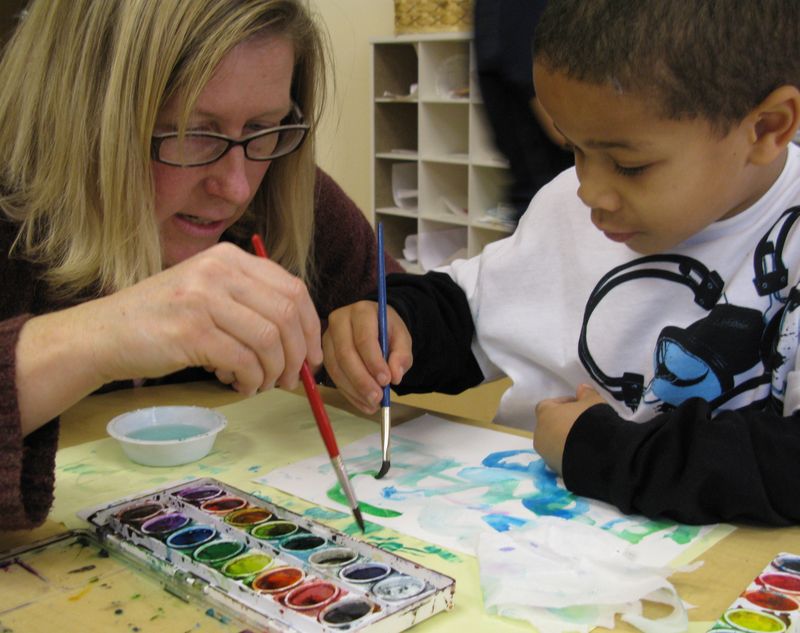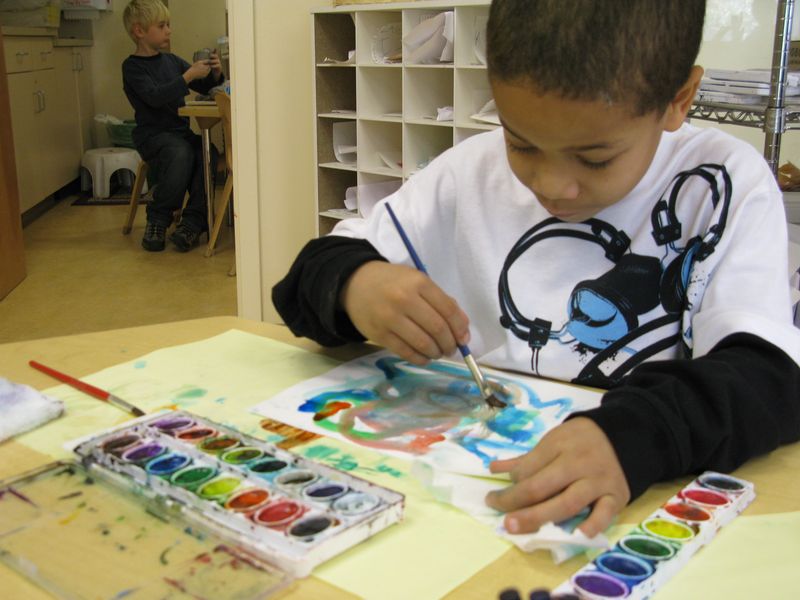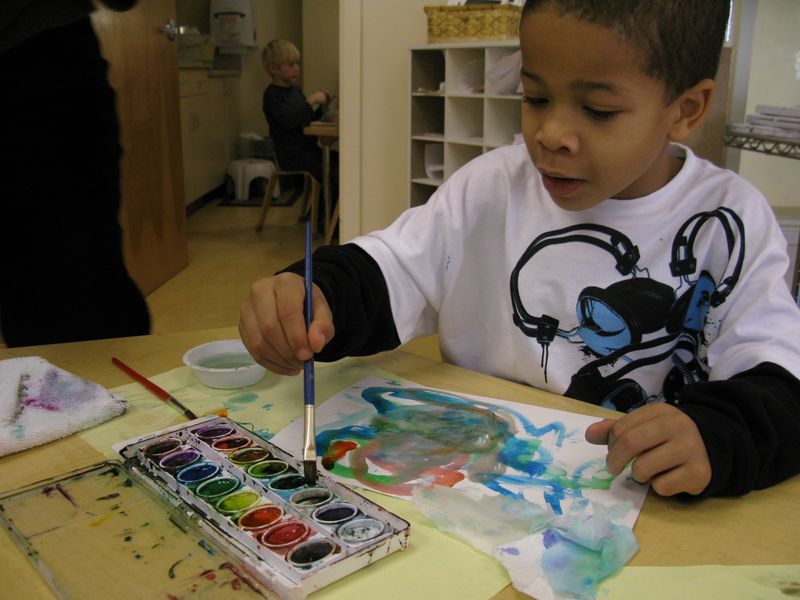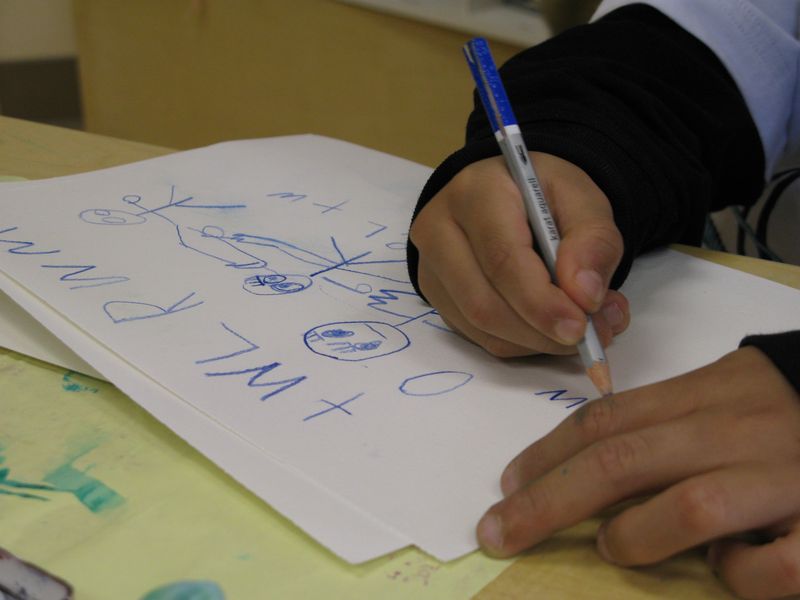Materials and Playful Literacy

by Susan Harris MacKay
Michael has chosen to tell his story with watercolor paints today. It is a story of a castle and knights with lots of swords. But he is unsatisfied with his first attempt. As he pushes and pulls the brush around the page, he becomes frustrated and asks for new paper.
Teacher Carole acknowledges Michael’s frustration and chooses to sit with him. Because she can see that he is limited by his understanding of the watercolor and brush itself, she supports him to try a different approach with the material. She knows that it isn’t possible to draw with a watercolor paintbrush the way you would draw with a pencil, but she can see that Michael hasn’t considered that yet.
- If I support Michael to have more skill with the material, will that free him to encounter new possibilities for the images and words in his story?
- If I help him slow down and reduce his level of frustration, will he develop a deeper level of engagement and a more productive creative flow?
Carole models ways to hold the brush and suggests that he think about how it feels to pet a cat. She playfully reminds him not to let his brush have a bad hair day! These images tickle his imagination and make him laugh, and he settles into his new discoveries. Now his attention sustains.
When Carole feels that he is ready to work on his own, she leaves him to it. As he works, Michael continues to remind himself of the things Carole has said, repeating her words aloud as he paints. And paints. And paints.
When he finally asks again for that new piece of paper, he is calm. And though he at first attempts to draw his picture with the paintbrush again, this time it is not new paper he requests, but a new tool. He trades his paintbrush for a pencil, and dives deeply into drawing the images in his mind.
He narrates his drawing as he works and captures the attention of Habdiel, who has been making his own story nearby. Habdiel offers his advice on shark drawing as Michael continues to think and create in words and pictures.
He writes the story of the castle. And he smiles.
The teacher listened deeply to the situation: the child; the story; the materials. She held those elements in balance and nurtured the relationship between them. As the keeper of the vision, she knew of possibilities the child hadn’t yet encountered, and she took the opportunity to lead him there. It wasn’t new paper he needed – it was new experience.
The following video is from our Geography of Story Workshop professional development kit, which develops teachers' understanding of the organizing structure we have developed at Opal School to support playful literacy in our classrooms. Watch and consider the power of playful literacy — a focus on making meaning, ample use of the arts, sharing stories, and time to play.
Download Video 4 The Power of Playful Literacy.mov (363298.7K)
How do you articulate the power of playful literacy?
How do you see making use of the languages of the arts as tools for literacy development in your setting?






This story was so inspiring and underlies the importance of giving the children a wide range of opportunities with art materials so they have a vocabulary with which to express their ideas.